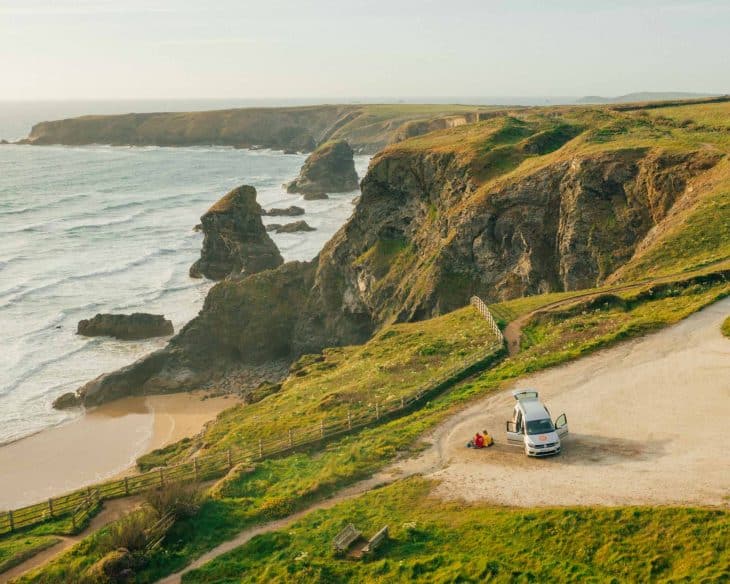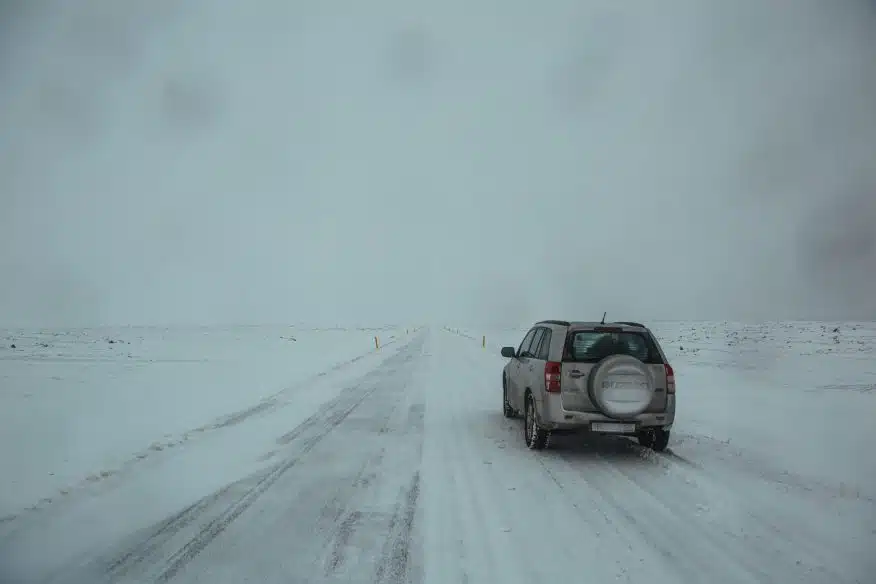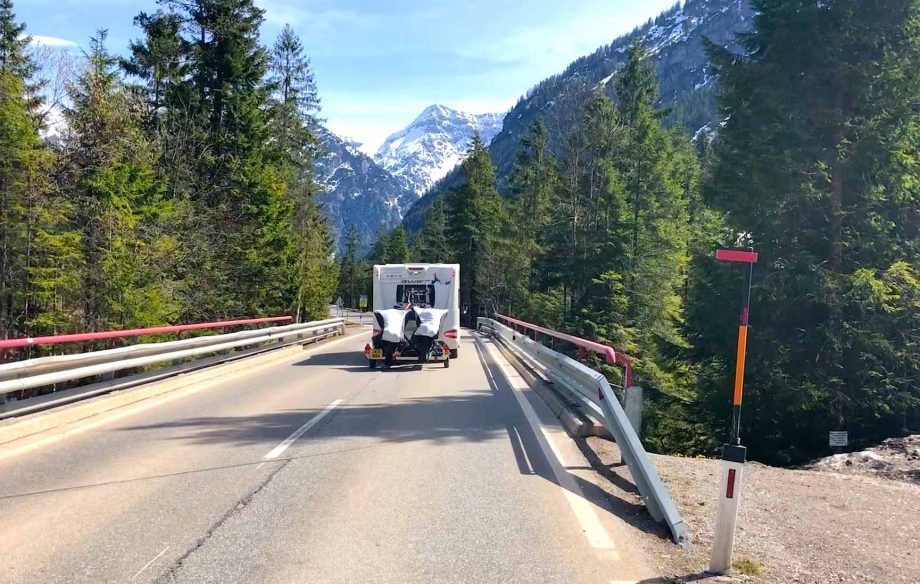Last updated on October 17, 2024

Planning a road trip can definitely feel daunting, especially if it’s a long one with many stops. But there are some ways to make things easier. And seeing as we’ve done tons of road trips over the years (we LOVE them!), we have lots of experience and advice to share.
So here’s our guide to how to plan a road trip (without going crazy in the process!).
See all our road trip tips and itineraries here.
Things to consider when planning a road trip

How much time do you have?
Work out how much time you have for the road trip. Remember to factor in flight arrival/departure times if you’re having to fly to your starting destination. If you get in early or your flight home is late in the day, you’ll have extra days to work with.
What’s your budget?

Another fairly obvious but essential consideration is how much money you have for the trip. Set a budget and leave a bit of wriggle room for unforeseen expenses along the way. Potential costs you’ll need to consider include: car hire, flights, fuel, accommodation, meals, drinks, activities and spending money for souvenirs etc.
You have a lot of freedom on a road trip to keep costs down, such as self-catering or eating at budget restaurants. Camping would also save you money, or you could stay in budget motels. But you also might not want to do any of that, in which case you could shorten the road trip or reconsider part of your route if the budget isn’t looking high enough.
What’s your preferred pace?

Everyone has different preferences and needs when it comes to pacing a road trip. Some people want to move quickly, packing in as much as they possibly can and ticking off all the “most dos”.
While others will prefer a more leisurely pace and won’t be worried about seeing every last thing. Mobility, energy and personal preference will play into this decision. And some other things to think about when it comes to pace are:
- How far are you comfortable driving each day?
- Are you travelling with kids who might not be able to tolerate extra long drives/moving every day?
- Are there specific places you’d like to spend a day or two exploring?
- What’s more important to you: seeing everything quickly? Or exploring a few places in detail at the expense of seeing others?
- Would you like to leave some room for spontaneity and stopping at places that catch your eye?
I’ve done both fast-paced trips and leisurely ones. For example, our trip in Japan was pretty quick as it felt like a once-in-a-lifetime trip and we were happy to keep up the fast pace for 10 days. We were also in our early thirties and travelling without kids. On the other hand, our road trips with kids tend to be slower, like the route we took in California. We do some single-night stays, but we balance them out with 2-3 night stays in between, and we never drive further than around 3 hours in a single day.
Personally, if I’m travelling for anything longer than a 7-day road trip, I would definitely want to include some 2 or 3 night stays, just to break up the constant travel.
And I always recommend leaving plenty of room for spontaneity, so you can discover hidden gems along the way.
Are there key things you’re desperate to see?

Think about the destination you’re travelling to and decide what your priorities are, and whether or not it’s realistic to see them all in the timeframe and desired pace of your road trip. You might have to re-prioritise if the answer is no.
Consider how far apart the destinations are and perhaps consider splitting the trip in pieces and doing the other section/s another time. For example, if you’re doing a New England road trip, you could concentrate on different states or areas – perhaps doing Boston to Bar Harbor rather than the whole of New England.
We cover this more in the point below on mapping out your road trip.
Would you prefer to move accommodation or take day trips?

This plays into the pacing considerations above. and will also depend slightly on your route/the locations of the places you want to visit. Some people hate to change accommodation and would prefer to do day trips from a single destination rather than change accommodation each night. This generally involves more driving, but will obviously depend on your overall route and the locations of the places you’re visiting.
Personally, I’d take changing accommodation over more driving, but it’s definitely a personal preference. And sometimes, taking day trips makes sense in terms of the route and ends up saving you time.
My advice would be to bear this consideration in mind when planning your route and see if it makes sense to do some destinations as day trips – either because it saves you time, or because it suits you better.
Are you doing a loop or starting and ending in different places?

Some road trips can be made into a loop easily, so you start and end in the same location. This can save you money with car hire as you won’t have to pay a fee for dropping the car off in a different location. It sometimes makes it cheaper with flights too as return flights, rather than multi-destination flights, are sometimes cheaper (this isn’t always the case, so do play around with flight options).
However, sometimes it’s worth the extra money if your route can’t easily be made into a loop. For example, for our San Francisco to Seattle road trip, we followed a linear route along the coast, and would have had to extend the trip significantly to get back to San Francisco from Seattle (it’s a 13-hour drive). For that trip, it made much more sense to fly into Seattle and out of San Francisco.
Think about the weather

When choosing your road trip location, think about the weather. Some roads might be impassable at certain times of year. For example, if your heart is set on driving Iceland’s ring road, remember part of it is closed in winter. The same will go for many mountainous routes.
Because of changing conditions, it’s hard to pin point the exact day that a road will re-open, so if particular parts of your journey are weather-dependent, make sure you choose a time when you can be comfortably certain that it’ll be possible.
What vehicle will you use?

First of all, is this a camper van or car kind of journey? And secondly, are you going to hire a car/van or use your own one? Obviously you can’t bring your own vehicle to far flung destinations, but it might be an option for places closer to home.
Do consider how long it’ll take to drive the vehicle back home from your final destination and if you have time for that. Sometimes it might work out better to hire a vehicle even though you could technically bring your own.
For example, we’d like to drive to Italy, but only have the time to drive one-way. For that trip, it makes much more sense for us to use hire cars/other forms of transport. In fact, that leads me to another important point…
Are you travelling across borders?

If you’re travelling through more than one country, there are a few things to consider when it comes to car hire.
You normally can’t pick up a hire car in one country and return it to another, so you’ll need to make sure you’re ending your journey in the same country your car hire started in. Another option is to switch cars when switching countries, but this would be an added hassle. Plus it’s usually cheaper to hire a car for longer, so this could affect your costs.
In Europe, because the countries are so close to each other and the borders are often quite long, you might find it more cost effective to return back to the original country, but in a different location. For example, we did a great road trip through France, Switzerland and Italy, which started in north-eastern Frances and ended in Southern France.
How to plan a road trip itinerary

Map out all the stops you want to cover
I love this part of planning! Map out all the places you’re keen to visit, bearing in mind the places you’ve identified as your priorities. I normally use Google Maps, saving all the destinations to a list so I can visually see them all at once on the map. This helps to visualise a possible route.
There are planning tools like Road Trippers that you can use. It has a prettier interface than Google Maps, and useful additional tools, such as estimating fuel costs. But you do have to pay a yearly fee to use it. Have a play with it and see what you think. You’ll get $5 off if you sign up with this link.
List the things you want to do and think about timings

Next list all the things you want to do in each destination and add those to the map too. Take note of the opening times and make sure you factor those into your route. For example, we’ve been caught out before when we’ve arrived at a museum only to find it’s closed that day.
Similarly, there are some attractions that open later/earlier in the day – if you’re doing a road trip where you move every day, you might need to make sure you see the afternoon ones on the day you arrive, and the morning ones on the day you leave.
Research accommodation

Another thing to think about is accommodation. Before totally locking down your route, make sure there’s accommodation available on the day/s you’re intending to be there. If your visit coincides with a big event, you might find the whole town booked out (it’s happened to us before!).
This is especially important if there are specific places you’d like to stay that form part of the reasoning for your trip. This is often the case for us as we prioritise special places to stay.
Check out other people’s itineraries!

Obviously, I would say this, but I genuinely think it’s helpful to read about other people’s itineraries and use them to inspire your trip (or even just copy them entirely).
It’ll help you to consider hidden elements that you might not have thought of before, such as events, fun road side stops, scenic routes, and lesser known attractions. It also helps save time with your own planning.
You can see all our road trip itineraries here.
Use all the information above to craft your route
Once you have all the information above, you can craft your final route. I use Google Maps to map out the actual route and assess the journey times. And then I use Notion to create an itinerary document, listing roughly what we’ll do each day. You could just as easily use Google Docs for this. Be sure to leave in a bit of wriggle room for anything unexpected.
Choose your car

If you’re traveling from home and using your own car, this is a moot point. But if you need to hire one, think carefully about the size and style you need. We once tried to save money by hiring the smallest car possible, only to arrive and realise all our stuff didn’t fit inside! Personally, I’d pay a little extra for a bit more room, especially on long family road trips as it’s nice to have a bit of extra space and not have to play Tetris every time you pack up the car!
Also think ahead to the places you’re visiting and whether or not you need a 4×4 or a car with a high clearance.
We use Discover Cars as we find they always have the best deals.
Prepare your own car
On the other hand, if you’re travelling in your own car, make sure it’s been fully serviced and insured, and is fit for travel. Don’t forget a spare tyre!
Don’t bring the car everywhere

Just because you’re on a road trip, it doesn’t mean you have to drive everywhere. Once you’re in a destination, you might find it easier/cheaper to park at your hotel and then take public transport. Sometimes parking, especially in cities or heavily touristed destinations, can be really expensive.
Get insurance

Make sure you have general travel insurance, plus insurance for your car hire. It’s normally cheaper to buy a third-party insurance for the car rather than buying it directly from the car hire company. This normally annoys them because I think it’s commission-based, but you will almost definitely save money buying it elsewhere. We use carhireexcess.com.
And for usual travel insurance, we recommend True Traveller or Holiday Extras. True Traveller are particularly useful because you can book it with them even when you’ve already started travelling, which is unusual.
Our road trip itineraries
See all our road trip itineraries here. And don’t miss our guide to how to plan a road trip.
UK: Best UK road trips | Best Scotland road trips
Europe road trips: Best Europe road trips | How to plan a France road trip | France itineraries |France – Provence road trip | France – West Coast road trip | Best Greece road trips | Best Italy road trips | Italy: Amalfi Coast, Rome and Tuscany road trip | Italy: Trentino road trip | Iceland road trip |Best Portugal road trips |Slovenia road trip | Best Spain road trips | The most colourful road trip in Europe (France, Italy and Switzerland)
USA: Boston to Maine road trip | Ultimate California road trip | New England road trip | Oregon road trip | Pacific Coast Highway | San Francisco to Seattle | Southern USA road trip | Texas road trip | The best USA road trips
Africa road trips: Cape Peninsula road trip
Australasia road trips: New Zealand North Island road trip | New Zealand South Island road trip
